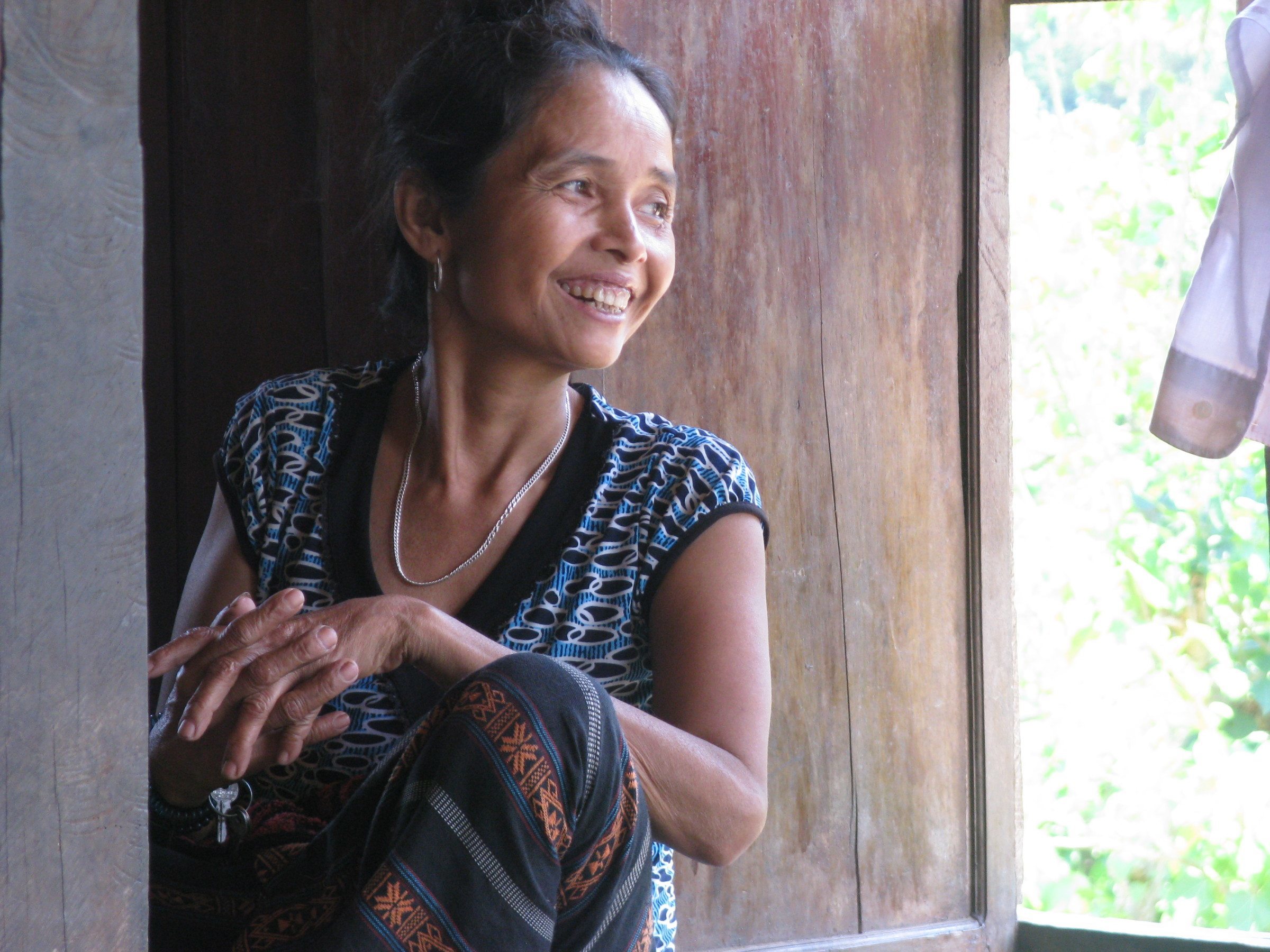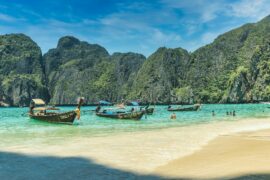You’ve heard all about Hanoi, Saigon, Halong Bay and imperial Hue – but what of the Vietnam’s lesser-known destinations?
The following are our pick of the best of Vietnam’s lesser-known – yet thoroughly worthwhile – locations; from a tropical island off the southern tip of the country to one of the world’s largest cave systems in central Vietnam and towering karst scenery in the north. It’s enough to get anyone’s feet itching!
1. Mai Chau
Mai Chau is a district located in rural Hòa Bình Province in the northwest of Vietnam, about 65km from the regional capital and about 160km from Hanoi.
Whilst not exactly “off the beaten track”, Mai Chau is a long way from Vietnam’s big cities and makes a fantastic place to discover a little of rural life. Home to the Black Thai and White Thai tribes (whose ancestors settled here from Thailand), Mai Chau is known for its beautiful scenery – with lush mountains, lakes, and rice paddies which carve patterns in the hillsides – and makes a great location for hiking or cycling.
We recommend spending the night in one of the area’s traditional stilt houses, where you’ll pay almost nothing, sleep on mats laid out on bamboo floors, try home-cooked Vietnamese meals and perhaps enjoy a traditional dance performance courtesy of your hosts.
2. Ninh Binh
Ninh Binh Province, where rivers snake through green valleys in the shadow of towering karst pillars, is an area of northern Vietnam that truly deserves to be called breathtaking. Known as “dry Halong Bay” to the locals for its similar scenery, Ninh Binh’s Tam Coc area is slightly less well-trodden yet no less spectacular. We recommend taking in your surroundings from the comfort of a longboat as you float down the river, or hiring a bicycle and riding out to the Trang An Grottoes.
3. Phu Quoc
If you’re looking for a real slice of Vietnamese paradise, Phu Quoc, located off the southern tip of Cambodia, is one of our absolute favourites. Consisting of a Phu Quoc main island (Vietnam’s largest island, covering an area of 574 sq km) and a series of 21 smaller islets, here you’ll find the stereotypical island idyll: clear waters, white sand, dense rainforest and precious little development – even despite the area’s increased popularity in recent years.
Whether you’re into diving, kayaking, motorbiking or just lying around on the beach and eating delicious local food – you’ll find it in Phu Quoc.
4. Nam Cat Tien
Vietnam is a densely populated country, but in the depths of Nam Cat Tien’s buttress-rooted jungle you feel you could walk for days without seeing another person.
One hundred miles to the northeast of Saigon lies one of Vietnam’s most important national parks: Nam Cat Tien. The 72,000 hectares of dense lowland rainforest and grassland is home to an enormous variety of flora and fauna, and is one of the final remaining refuges for wild native populations of elephant, leopard, bear, monkey and reputedly even tiger!
If you’re lucky enough to visit Nam Cat Tien, we recommend staying in a lovely lodge overlooking the river, visiting a gibbon rehabilitation centre, and trekking through the jungle in search of the rare Siamese crocodile…
5. Phong Nha
A national park and World Heritage Site, Phong Nha-Ke Bang is located 500km south of Hanoi and is well-known for its incredible limestone cave systems – one of only two regions of its size in the world. Composed of over 300 caves and grottoes which stretch over a distance of 126 km, Phong Nha’s trophy cabinet is practically groaning: it is home to the largest cave in the world, the longest underground river in the world, and the largest combined system of caverns and passageways in the world.
Perhaps most famously, Phong Nha is home to “Paradise Cave” (Thien Duong), which was discovered in 2005 and contains limestone formations that dwarf those of any other cave in Phong Nha in terms of scale and intricacy. Located in a spectacular setting well into the mountains of the national park and only accessible through quite some effort, we highly recommend taking the trouble to visit as the cave is by far the most atmospheric and impressive in the park!
More recently even than this, in 2009 Son Doong Cave was re-discovered by a team of scientists from the British Cave Research Association (it was actually discovered in 1991 by a local man, to give credit where credit is due!) and has since been confirmed as the largest cave in the world at 5km long, 200m high and 150m wide. The cave contains some of the largest stalagmites and stalactites in the world, and some unusually large cave pearls have also been found there.
Unfortunately it’s unlikely that you’ll be visiting Son Doong Cave any time soon, as admittance is pricey and only a handful of tourists have been allowed entry so far (the first tour was run in 2013 to the tune of $3,000 per person!), but it did enter the news recently after an outcry against proposed plans to built a cablecar system inside the cave – a move that could cause collapses and tarnish the pristine nature of Son Doong.
Hopefully in the near future Son Doong will become more accessible to the public without the need for such risky measures, and without endangering the beauty of the cave.
Just five fantastic places that you probably didn’t know about. Just add them to that wish list of yours…




Awesome. Yes itchy feet.
What is late March like in each these areas?
Sharon Hoyt
Please excuse typos, from my busy mobile!
Sent from my Verizon Wireless 4G LTE smartphone
Late March is a beautiful time of year to be in Vietnam. Dry, sunny, not too hot. Take a look at our trip planner. http://www.insidevietnamtours.com/explore-vietnam/
Reblogged this on A Love For Vietnam.
Reblogged this on LIFE in SE ASIA a daily magazine.
Great list. I visited Phong Nha and Ninh Binh while I was in Vietnam and they were two of my favourite places. So many other hidden treasures in that wonderful country. Sounds like you had a great trip!